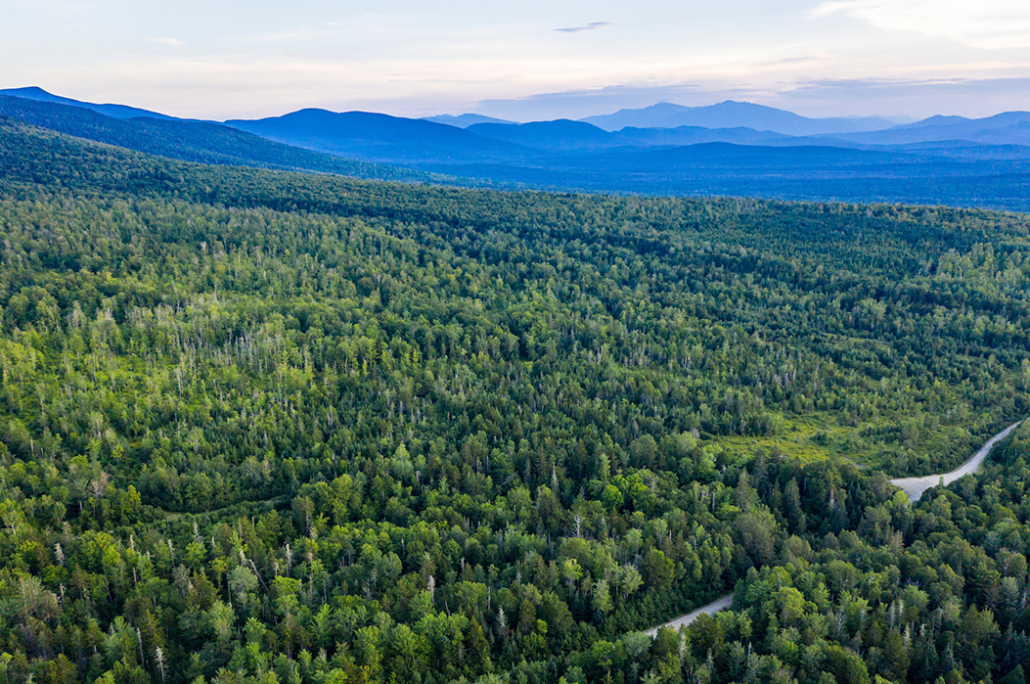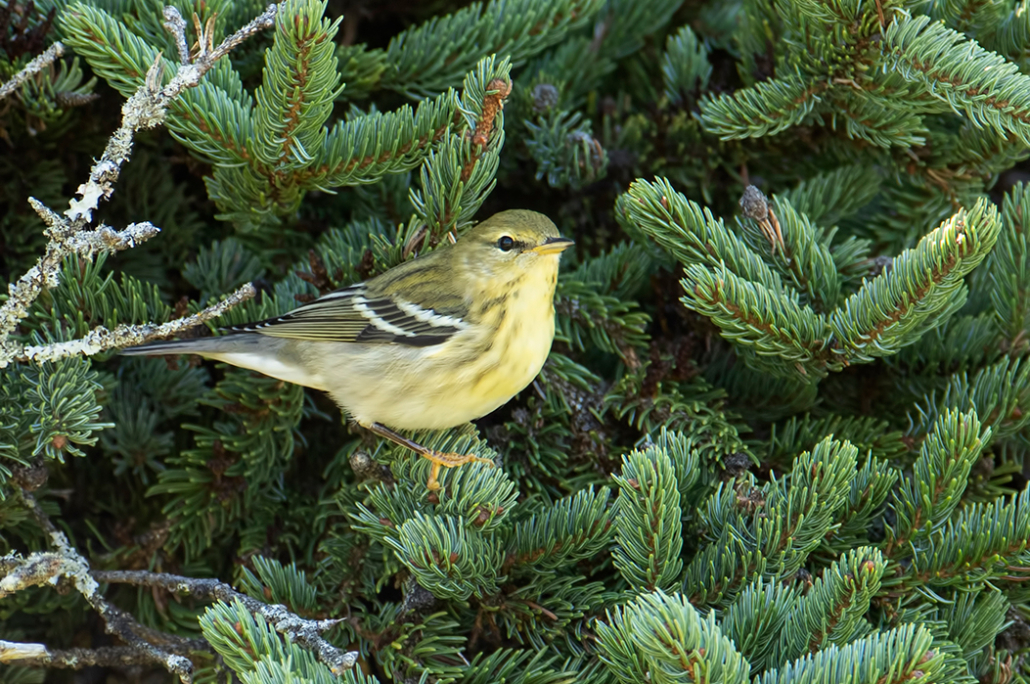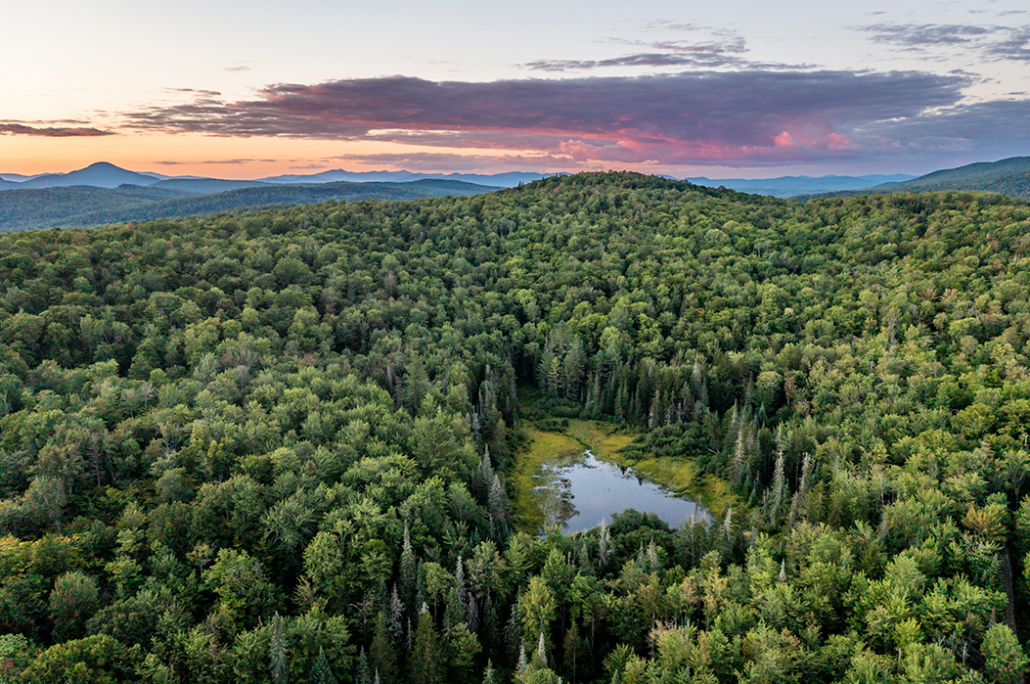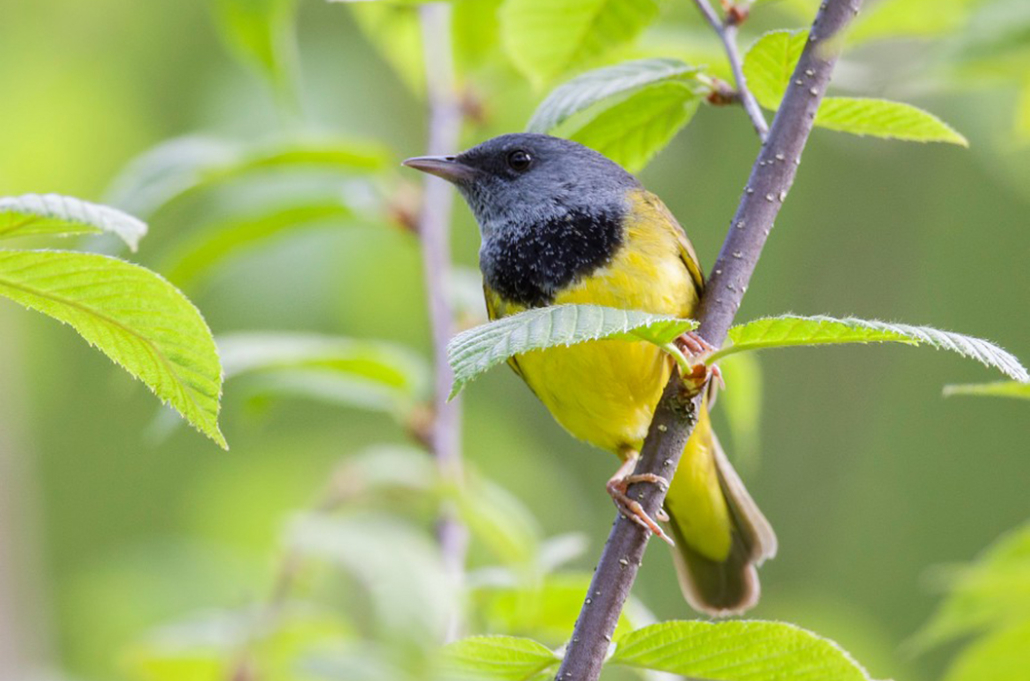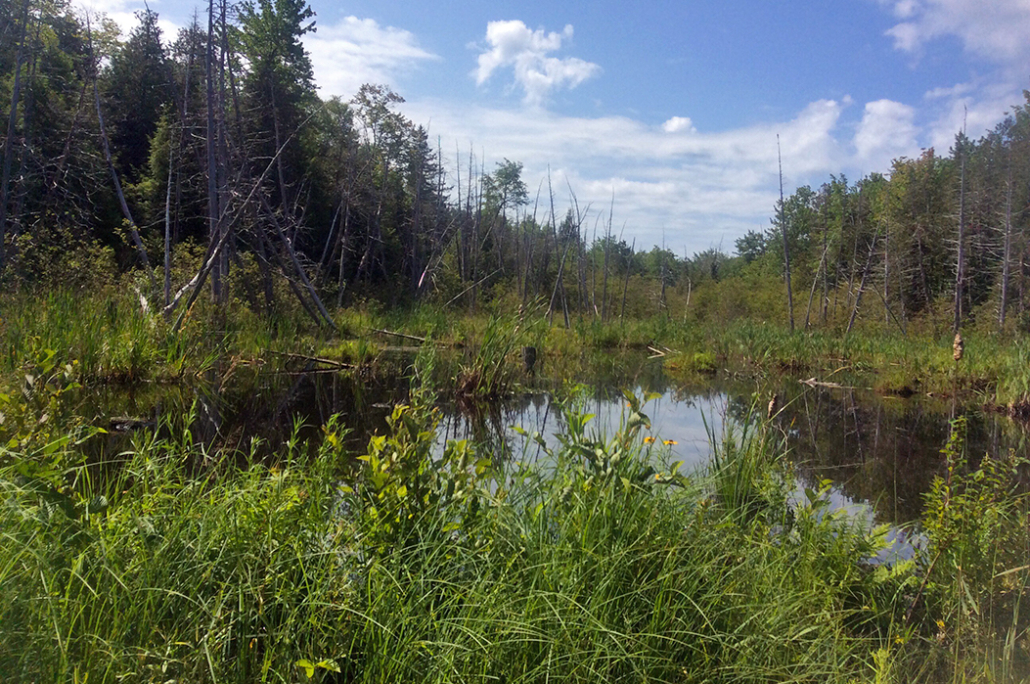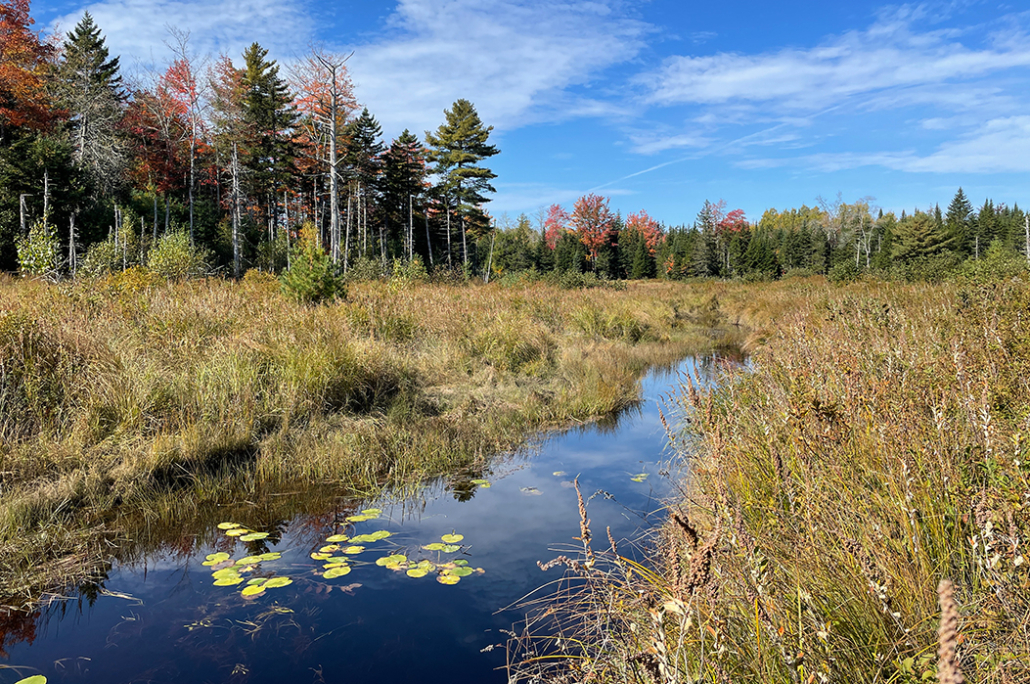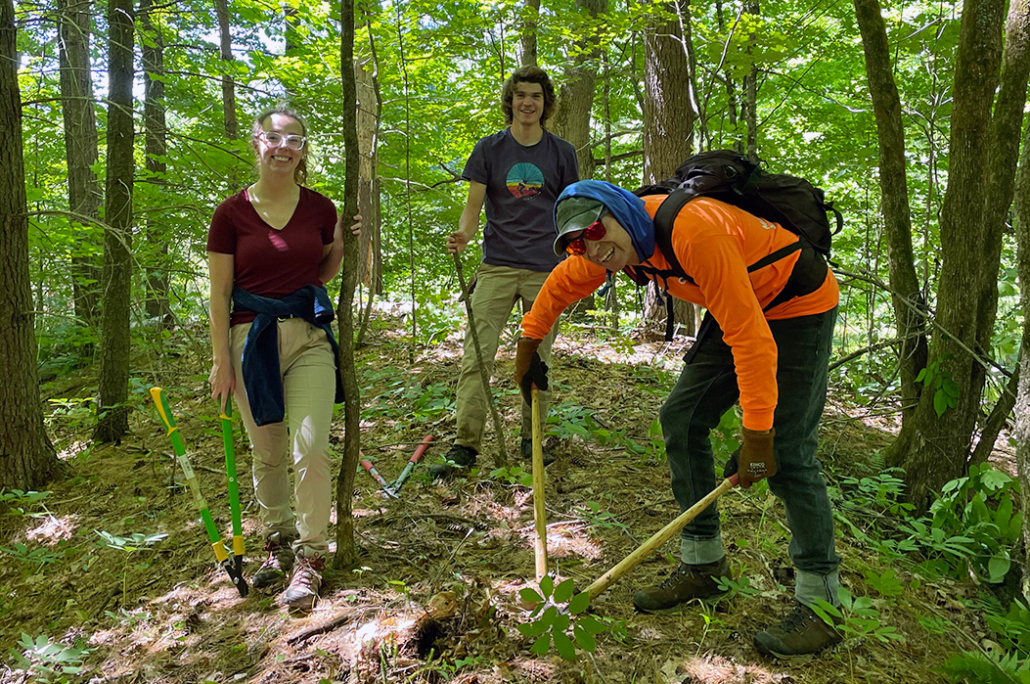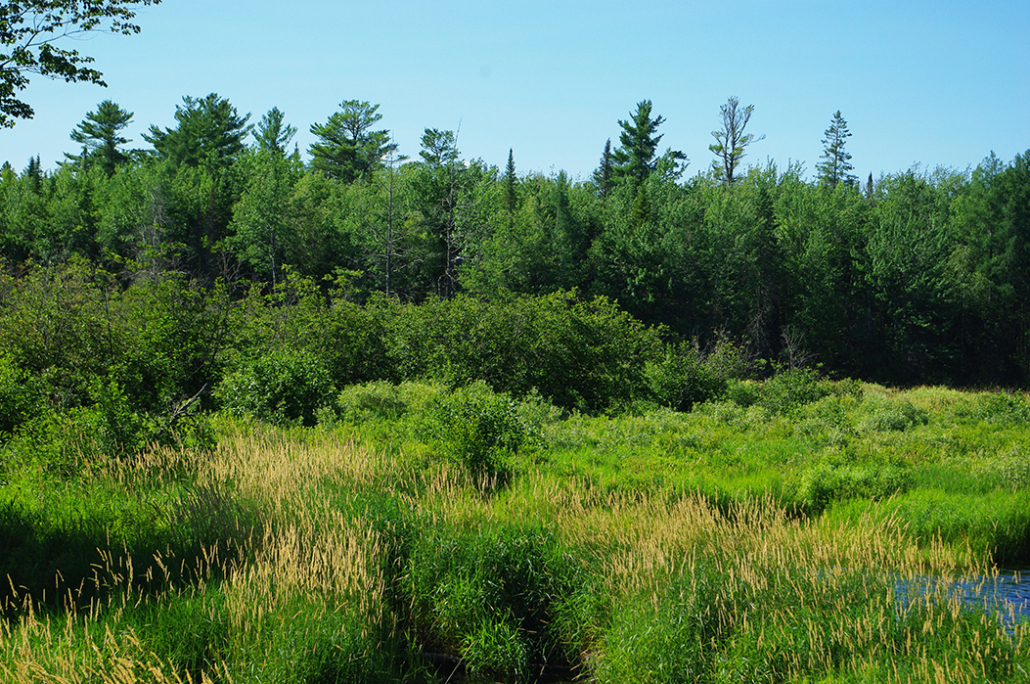In the heart of the Mahoosucs next to Grafton Notch State Park, the Grafton Forest Wilderness Preserve is a forever-wild refuge along Maine’s Appalachian Trail.
In Western Maine along the New Hampshire border, the Mahoosuc Range compares only to Mt. Katahdin in its vast, unbroken high-elevation forest. As northbound travelers on the Appalachian Trail (A.T.) cross into the Pine Tree State, the green sea of the Mahoosuc Mountains stretches before them.
The 6,045-acre Grafton Forest Wilderness Preserve builds on a legacy of wildness in Western Maine. These mountains, also known as the Mountains of the Dawn in honor of the Wabanaki of Maine, or the People of the Dawnland, are some of the first mountains to greet the rising sun as day breaks over this continent.
The Western Maine Mountains are of high conservation importance, and the Wilderness Trust has turned its attention to protecting more land in this eco-region in recent years. Grafton Forest is a keystone area linking a vast public Ecological Preserve and a 15,000-acre, well-managed woodland conserved by The Forest Society of Maine. From the Preserve, a few days’ hike north on the A.T. brings one to the outskirts of Northeast Wilderness Trust’s Lone Mountain and Redington Wilderness Sanctuaries, which cumulatively protect 4,455 forever-wild acres near Bigelow Preserve.
To complete this conservation project, The Forest Society of Maine and Northeast Wilderness Trust jointly raised $10.7 million in private funds. The sale of the land was made possible by Wagner Forest Management, a wonderful partner throughout the conservation process.














